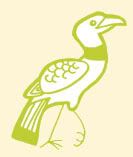
First order of business was of course to dive into the world. I got hold of both paper-copies and audio-copies of the primary text and supporting text, and read them both over the course of a few days. I read the numerous essays included in my Norton Critical Edition. I re-read particularly descriptive sections of "The Poisonwood Bible," by Barbara Kingsolver. I made many, many trips to the library.

I wanted to put myself in the minds of the Africans as much as possible. It meant finding the pre-colonization peace, which would deepen the anger and injustice of the ongoing colonialist oppression. It meant finding that anger. For that, I turned to more modern sources. I downloaded W. Kamau Bell stand-up shows, both One Night Only and Face Full of Flour. I re-listened to American Radioworks' documentaries on Jim Crow and the civil rights movement.
I did other things. I re-watched Planet Earth's "Jungle" episode. I watched the Michael Palin's Pole-to-Pole episode from Tanzania, wherein he visits the site where David Livingstone and Henry Morton Stanley met (an event that was very much on Europe's mind at the time this novella was published). I kept searching. I just kept following interesting ledes, drawing a lot, and keeping the channel open.
November 8: It's incredible to live in this day and age where I can watch a youtube video about making fufu.
It was finally in a book called "Art of Africa", published by Scala, that I saw some images of the White Man as the natives saw him.

"An albino," suggested Okonkwo.
"He was not an albino. He was quite different...and he was riding an iron horse."

These images greatly influenced my early sketches of the "pilgrims".


And it was playing with these shapes that eventually lead to the serendipitous cover idea.

I had already been plotting good story beats and was amassing quite a very promising thumbnails of moments from the story, but finding this cover idea was very encouraging. It made me feel like I was on the right track.


